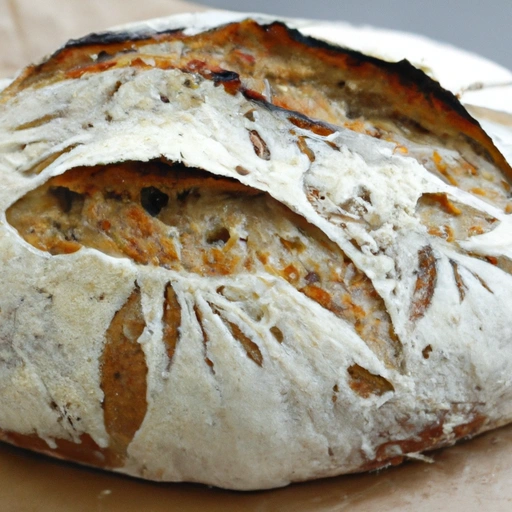Sourdough
Description

Sourdough is a fermentation-based bread ingredient renowned for its characteristic tangy flavor, chewy texture, and crisp crust. It is made from a simple mixture of flour and water that captures wild yeast and bacteria from the environment. The symbiotic relationship between these microorganisms creates lactic acid, which gives sourdough its unique taste.
Unlike bread made with commercial yeast, sourdough undergoes a longer fermentation process, which can take anywhere from several hours to days. This not only develops the flavor but also affects the bread's nutritional profile. Sourdough is a versatile ingredient that can be used in a variety of recipes, appealing to both artisan bakers and home cooks around the world.
Common uses
Sourdough is commonly used in baking bread, but it also finds its place in a variety of other baked goods. It can be used to create sourdough starters for pizzas, pancakes, waffles, crackers, and even desserts, providing a unique flavor profile and texture to these dishes.
Nutritional value
Calories
A typical slice of sourdough bread (weighing approximately 1 oz or 28 grams) contains around 70 to 80 calories.
Protein
Each slice provides about 2 to 3 grams of protein, which varies based on the type of flour used.
Fat
Sourdough bread is generally low in fat, with a slice containing less than 1 gram of fat.
Carbohydrates
The carbohydrate content of a slice of sourdough bread is around 15 grams, with some coming from dietary fiber.
Vitamins
Sourdough contains B-vitamins like thiamin, riboflavin, and niacin, albeit in small amounts.
Minerals
This fermented bread also provides minerals like selenium, folate, and manganese.
Health benefits
Sourdough's fermentation process makes it a potentially healthier option than other breads. The presence of lactic acid bacteria can improve digestibility and increase the bioavailability of nutrients. Fermentation also reduces the bread's phytic acid content, which can inhibit mineral absorption. Additionally, sourdough generally has a lower glycemic index (GI), which can help maintain stable blood sugar levels.
Potential risks
For individuals with gluten sensitivity or celiac disease, regular sourdough bread is not a safe option as it contains gluten. Additionally, those with a high sensitivity to fermented foods should consume sourdough with caution due to its lactic acid content.
Common recipes
Common recipes using sourdough include rustic loaves, baguettes, rolls, and boules. It is also the base for many artisanal breads and can be used in sweet and savory dishes alike.
Cooking methods
Sourdough preparation often involves proofing, shaping, and baking. The dough is typically mixed, allowed to rise (proof), shaped into loaves or other forms, and baked until golden and crusty.
Pairing with other ingredients
Sourdough pairs well with a variety of foods, from creamy butter and soft cheeses to robust soups and stews. It also complements salads and can be used for sandwiches with a wide array of fillings.
Summary
Sourdough is a distinctive and multifaceted bread ingredient with a rich history and a wide array of uses in baking. With its unique flavor, potential health benefits, and adaptability in recipes, sourdough continues to be cherished by food enthusiasts around the globe.